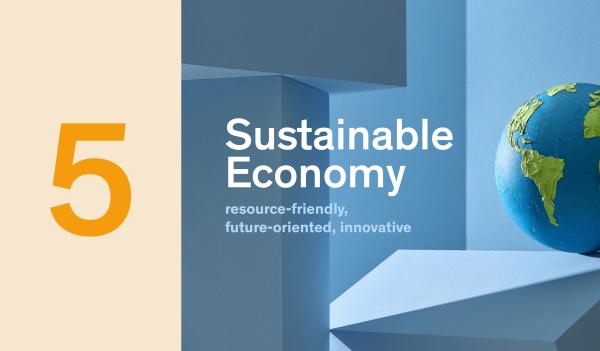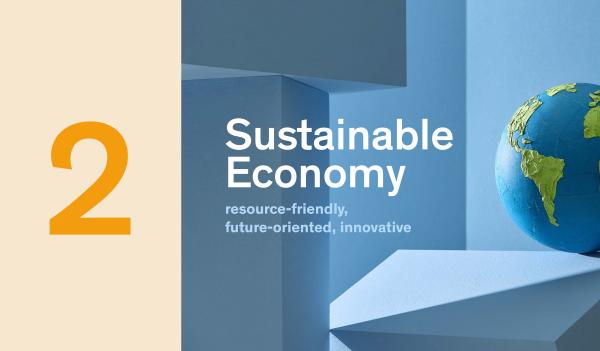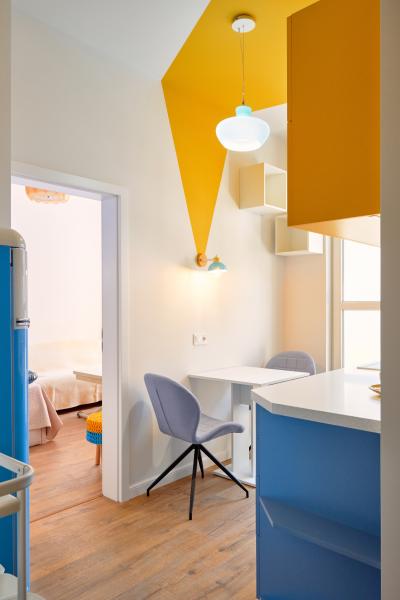Building and Construction
The environmal footprint of housing can be reduced by changing (i) housing demand and (ii) the material and energy consumption related to the life cycle of residential buildings. The co-creation lab (CCL) «Sustainable Housing and Construction» combined both aspects by involving over 70 experts in workshops and interviews.

Background
The consequences of climate change are increasingly evident and rising energy prices and supply bottlenecks for energy and building materials reveal vulnaribilites in our economic systems. Currently, housing shortages are an important topic on the Swiss political agenda.
Against this background, the CCL presents a vision for sustainable construction and housing as a healthy settlement that is maintained and renewed without using fossil fuels and using secondary resources only, providing sufficient affordable housing for all society members.
Aim
To close the gap between the current situation and this vision, the CCL contributes to a transition process by offering supporting knowledge and a place for debate, mutual learning and creative thinking. It focusses on topics for which the research team has a track record of scientific and applied research, in particular but not only in the context of the NRP 73. It aims at (i) giving an orientation to stakeholders and interested organisations and (ii) helping to set the agenda and lay the ground for getting into action.
Results
This collaboration revealed that the transition process to sustainable housing and construction should combine elements of both demand-oriented and supply-oriented strategies. The foci should be on
-
reversing the trend of an increasing per-capita demand for living space (demand side) and
-
increasing energy and material efficiency in building operation and construction (supply side).
Material cycles in construction
Putting an emphasis on demand-side strategies is pivotal as we expect a population growth of approx. 20% in Switzerland until 2050 with an increasing share of elderly people (over 65 years). Yet, we can still meet our climate goals until 2050 if we use every option for phasing out fossil fuels. But, we will not be able to close material cycles in construction by 2050 as we will continue building infrastructures to supply a growing population.
This transition can only be accomplished by a joined effort of all stakeholders involved: industries (energy supply, building materials, construction, real estate, financial services), public authorities (municipal, cantonal, federal), planners (architects and engineers) and households (building owners and tenants). Their collaboration should be oriented towards mutual learning processes that will encourage innovation and help to manage and share risks.
We are convinced that urgent action is needed in different fields in parallel:
Kick-start transformation processes with long-term perspectives in:
-
forest management to increase production of timber for construction and
-
design/development of circular buildings, components and materials for disassembly, reuse and recycling.
Accelerate already ongoing transformation processes:
-
replacement of fossil fuels in operational energy demand for buildings and production of building materials and
-
increase the share of biomass-based materials (e.g. timber) as well as reused/recycled material.
Encourage social innovations and institutional development
Their role in the transformation process has not yet been sufficiently recognized. They could
-
increase the residential mobility of households and
-
foster collaboration and mutual learning between actors in the planning process (client, architect, engineer, builder, material producer etc.) as well as between different experts in building and construction.
Implication for research
The CCL shows how the concept of transition management can be used to design a process for collaboration between research teams and stakeholders. It is oriented towards mutual learning to develop a common agenda as well as follow-up projects - viewed as transition expertiments that encourage co-creation between stakeholders in housing and construction. It helped to define a number of relevant research questions in different fields of research that will encourage researchers to engage in the envisioned transition process and provide supporting knowledge.
Implication for practice
The CCL recommends strategies for transition. Public policies should focus on efficient use of built living areas involving stakeholders in the real-estate sector and civil society in stimulating residential mobility. On the supply side, public policies should strongly encourage the replacement of fossil fuels in operational energy demand for buildings and in the production of building materials. Public and industry stakeholders should increase the share of biomass-based and reused/recycled material in construction, and encourage design for disassembly and recycling, with a view to strengthening the circular economy for this sector that accounts for over 70% of all material consumption (in weight).




